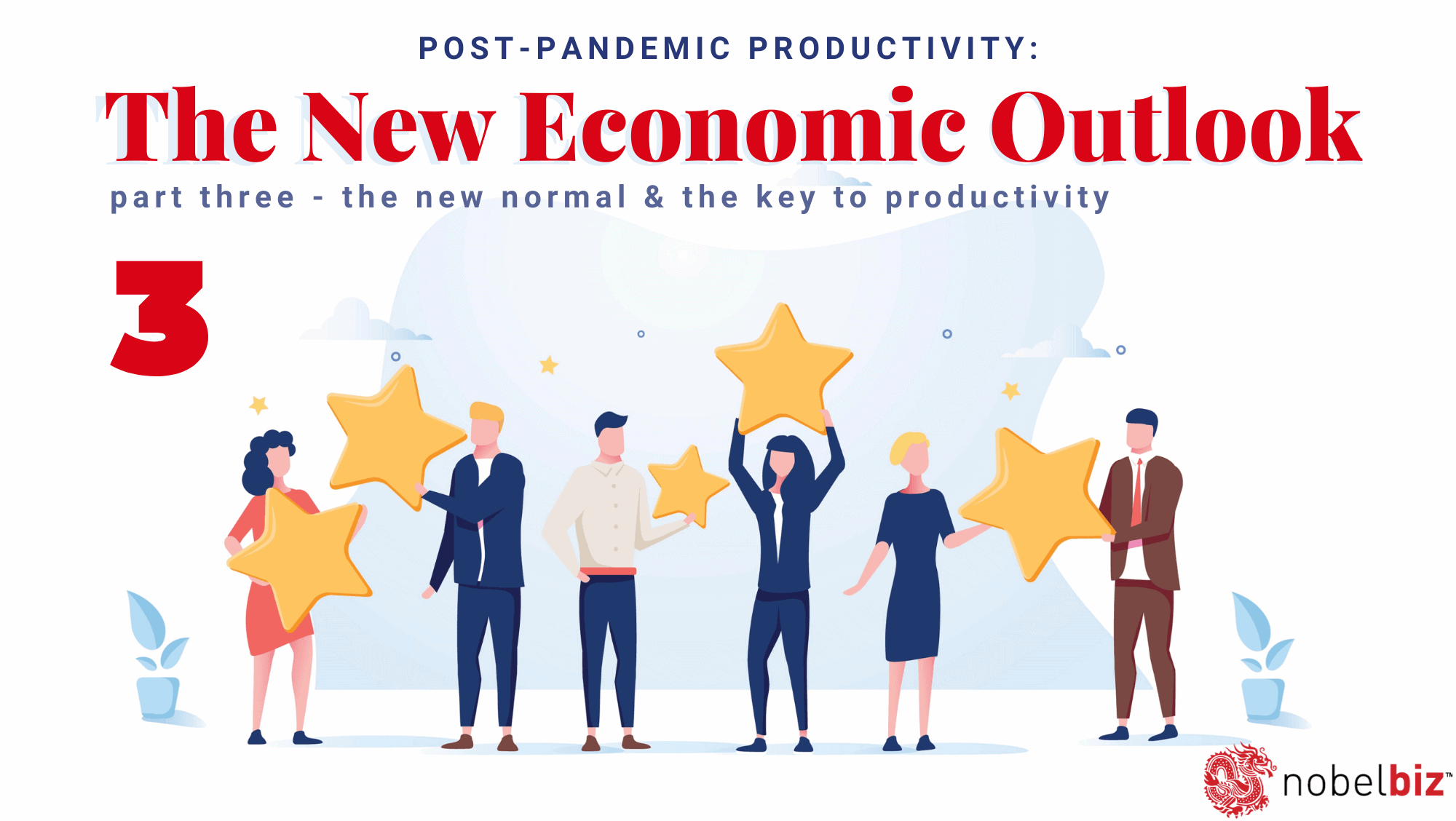In the previous two parts of this three-part article, we went on a long analysis of how the business world in general and the contact center world, in particular, have been impacted by the concurrent crises that have “plagued” 2020.
Specifically, we zoomed in on consumer sentiment and psychology in a post-Pandemic world, and the gist of that is everything will be vastly different moving forward. For more on that, go back to our first piece of this puzzle.
Now it’s time to get down to basics. In this third part, I’m going to explore customer experience in this new world we live in, but I’m also going to determine what this new world is supposed to be.
After that, it’s just a matter of ironing out the edges – we started this endeavor to determine how to stay productive as a business and as a contact center after the Pandemic. The answer is elevating your customer experiences and investing in, rather than slashing the budgets of, your CX. It’s time to get productive!
Customer Experience Consistency & the Transition to a New Normal
A March 3 Analysis by the Harvard Business Review adequately predicted that COVID-19 might have a political legacy that will directly influence its economic legacy.
Political ramifications are not to be ruled out, globally, as the virus puts to the test various political systems’ ability to effectively protect their populations. Brittle institutions could be exposed, and political shifts triggered.
However, COVID-19 went beyond that and exposed considerably more, larger, systemic problems. What we’ve talked about – the hyperawareness of the consumer, their interest in business practices relating to racial equality, climate change, and other issues – are all consequences of a post-pandemic overview of the world. And while it’s easy to imagine there’s no connection with post-pandemic productivity – it’s also wrong.
Customer experience will be the key to maintaining loyal customers. Keeping customers loyal will prevent further damage as the world recovers from 2020. And maintaining that customer experience consistent throughout business operations is mandatory.

What’s the New Normal?
- Customers want better support for at-home working conditions. You cannot ask people to come to a physical store anymore to complete a transaction or pick up a product. A stunning number of businesses still relied on physical spaces. That’s gone.
- Customers want more transparency and better business practices.
- Customers want to feel safe when they are interacting with you.
- Customers want to have conversations on their own terms, not be put in a queue and left there.
- Customers will be more skeptical when contact persons throughout their customer experience journey go the extra mile. Is this business compensating for something?
Several opinion pieces within the industry highlight the need to anticipate and adapt to current consumer behavior moving forward. And many companies are already doing so.
Which marks a decided evolution in business people’s attitudes towards customer experience in 2020. It may have taken years or even decades to make CX a global term that’s understood by all CEOs and board members, but the result is promising. Now, when faced with a pandemic that forces them to take a hard look at expenses, many business people would rather sell their physical offices than sacrifice customer experience. Because this is definitely not the time to be cutting customer experience funding.
What Metrics Matter to Consumers Post-COVID?
And they are smart in doing so. Consumers are growing up at an accelerated pace as a result of COVID-19, as we’ve seen earlier in the article. Further emphasizing this, several COVID-19 studies including one from McKinsey go to great lengths to demonstrate what matters for the new, post-pandemic consumer.
- How health-centric a company/product is. Consumers will weigh every health implication of a product – whether it is for safety against infection or because they’re more interested now in maintaining a healthy lifestyle to boost their immune system. The previously cited study mentions “~75% consumers with strong preference to exercise and healthy eating post-crisis”.
- The availability of digital commerce. It’s not at all surprising that more people are making their purchases online. What is surprising, however, is the number of people that have gone online: anywhere between 20% and 60% more than before according to a McKinsey US Consumer Pulse Survey.
- Spending time at home or on local activities. Of course, people are staying at home during a pandemic. What’s surprising however is that people are willing to plan local activities like domestic traveling or going to events, and going to the movies (all, of course, in a safe manner), but they also want to continue making their grocery shopping online.
- Analyzing prices and alternatives before making a purchase. Online solutions have much better tools that allow customers to make informed decisions when making a purchase.
- Health responses in their local areas. Consumer confidence is higher in areas where the pandemic is contained and has been handled well. This statistic further complicates the extent to which the crisis has impacted global economies.
These metrics are unsurprisingly relevant for both B2B and B2C – given that everyone is affected by the crisis in one way or another.

The Key to Productivity Post-COVID:
Elevating Customer Experiences
It seems focusing on CX during the post-corona outlook isn’t as simple as continuing your previous efforts in that direction. The business world needs to take a proactive approach to customer experience. That means planning for and anticipating consumer needs based on data, research, and consumer feedback.
These processes begin and end in the call center. Whether it’s outbound or inbound, sales or support, the agents of our industry are more often than not the drivers and the touch-points for consistent customer journeys.
Therefore, in a post-pandemic world, I argue that most if not all call centers need to find a way to integrate customer experience within their processes, reporting, and analytics – in a way that is both better than before the pandemic (because nobody wants to go back to that) and particularly relevant to the current global economic context.
These businesses have to find adequate solutions that cut costs in other areas in order to enable better agent experiences that will, in turn, lead to better customer experiences.
Simply being present in multiple places where people spend their time online is a big step in the right direction. Facebook, WhatsApp, Twitter – many businesses don’t even have their accounts set up on these platforms and that’s something easy they could be doing to improve their customer experience.
Then, make sure your voice connections are working, that the agent’s internet connection is working, and that the carrier you have is delivering adequate line quality – all are important drivers of customer experience.
By using an efficient omnichannel tool – like our OMNI+ – contact centers can prioritize agents based on the nature of their at-home environment. Cutting any unnecessary risks when dealing with customers – such as dogs barking or other noises in the background – is also a way of elevating the productivity of your business to meet the needs of the hyperaware consumer.

And by cutting, I don’t mean replacing personnel, but simply redistributing the agents based on their most successful interactions. There are existing tools within the contact center solutions we (and others) present, that enable automatic queue distribution based on an agent’s skill set.
Many business leaders are not aware that such efficient tools for optimizing their contact center efficiency exist. As such they will be forced to rely on other means that are at once far less effective and a lot more costly in the long run. And in the wake of a pandemic and the middle of a global recession, that is the very last thing they should be doing.
Instead, focus on improving CX to generate customer loyalty, and let us help you on that journey with our innovative solutions.

The World Won’t Be the Same – It’ll Be Better!
This series of articles concludes that global investment in CX is here to stay because, after the long drudge of explaining it, businesses have finally gotten around to appreciating their consumers.
Maybe this is spurred by the sudden drop in sales due to everyone being locked at home. Maybe people saw just how damaging losing your consumers can be. Or maybe it’s a numbers game.
What we do know is that we can offer the tools to take your CX to the next level. Whether it’s an omnichannel solution to harness the power of social channels and intelligent supervisor tools or a carrier of carriers network designed for crystal clear line quality, we are your one-stop shop to enable a more productive contact center and drive your business into the future with clarity and purpose.

Andrei is an experienced marketing professional specializing in propelling growth for both B2B and B2C companies. Proficient in streamlining marketing operations and enhancing lead and customer experiences through SEO and marketing techniques.







